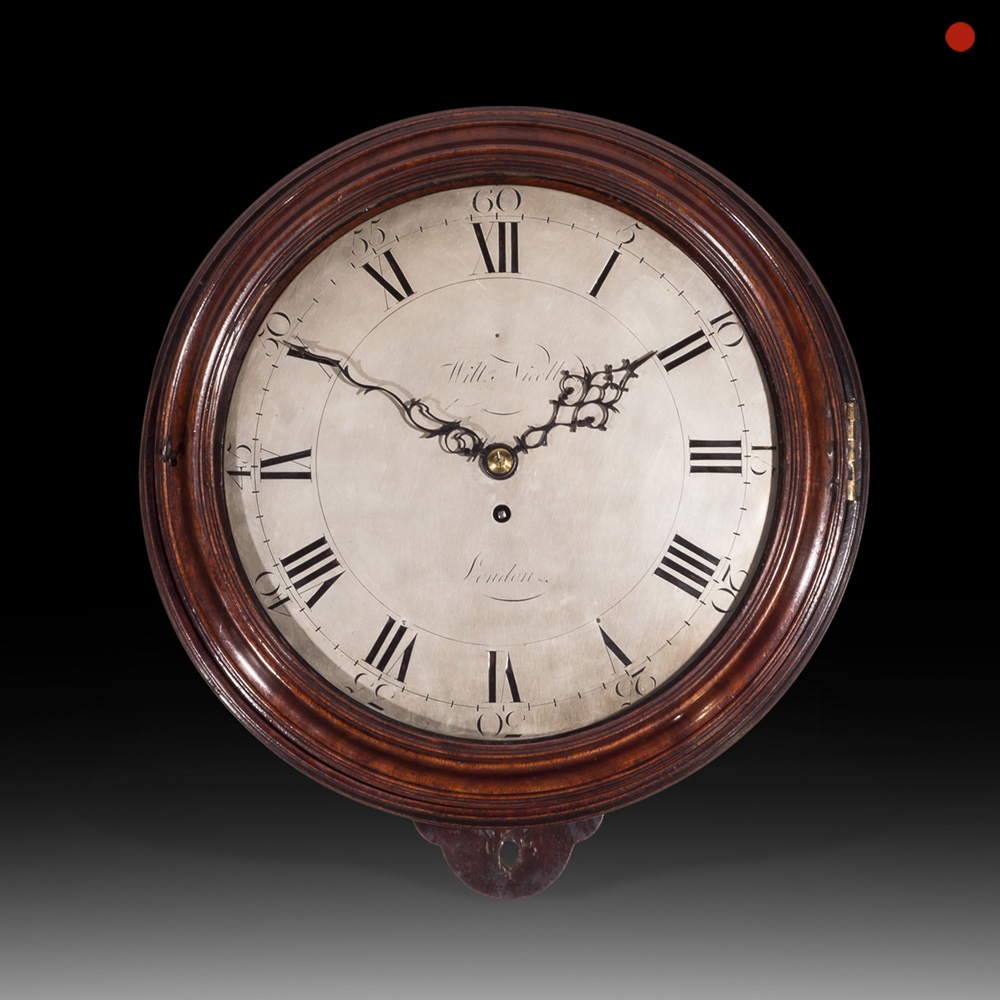Large Mahogany 18th-Century Dial Clock, William Nicoll, London
1780 England
Sold
Request Information
Follow Us
Large Mahogany 18th-Century Dial Clock, William Nicoll, London
The solid mahogany case has a moulded mahogany glazed door, which can be locked on the
The silvered brass dial is attached to the case by two spigots, which pass through holes in the outer rim of the case, which are secured at the back by steady pins. It is signed by the maker in the following manner:
Willm Nicoll London.
The time is indicated by a fine pair of period pierced blued-steel hands on a black Roman chapter ring with Arabic five minute and minute divisions.
The spring-driven, eight-day movement has a going train with fusee, verge escapement and short pendulum.
Features
• Moulded mahogany glazed door
• Viewing doors to the side and bottom
• Large silvered dial
• Signed to the dial Willm Nicoll London
Signed/Inscribed
Willm Nicoll London
Condition
Provenance
Private collection Thame Oxfordshire
Literature
There are several makers of this name recorded, but it is most likely that this is William Nicoll(s) who was established in Great Portland Street around 1795 and also made barometers.
Brian Loomes, ‘Watchmakers and Clockmakers of the World, London’, 2006, p. 572
Dimensions
PREVIOUSLY SOLD
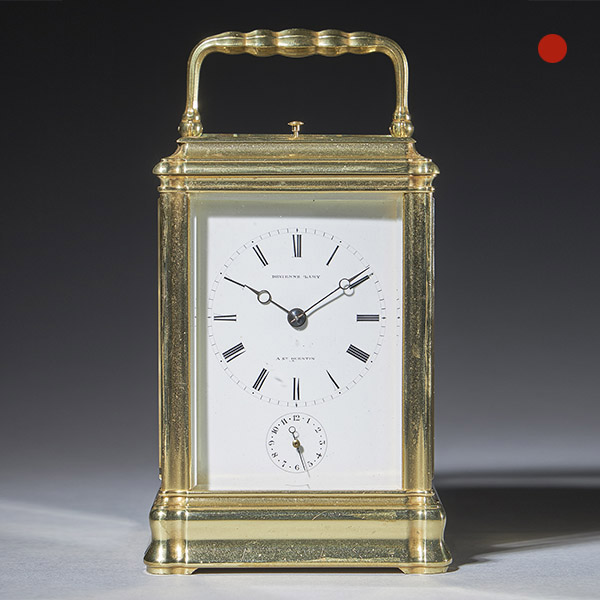
A Rare And Unusual 19th-Century Carriage Clock Signed Devienne Lamy A St Quentin, Circa: 1860
A Rare And Unusual 19th-Century Carriage Clock Signed Devienne Lamy A St Quentin, circa 1860. The gorge case has bevelled glass panels on all sides.
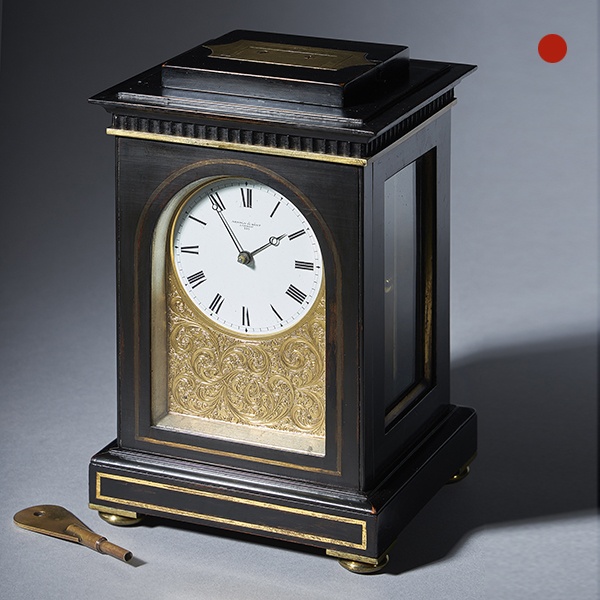
A Unique And Fine Mid 19th-Century Travelling Clock By Celebrated Makers Arnold & Dent, London
Unique and Fine Mid 19th-Century Travelling Clock By Celebrated Makers Arnold & Dent, London. The time is indicated by a fine pair of blued-steel Breguet hands.
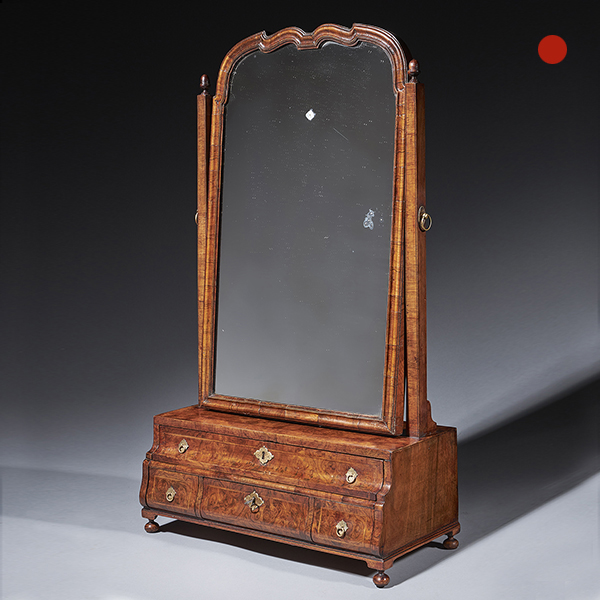
A fine burr walnut George I dressing mirror. Circa 1715-25 England.
A fine burr walnut George I dressing mirror Circa 1715-25 England. SoldFollow UsA fine burr walnut George I antique dressing mirror An extremely rare and fine George I burr walnut dressing mirror raised on ball and bracket feet. The drawer...
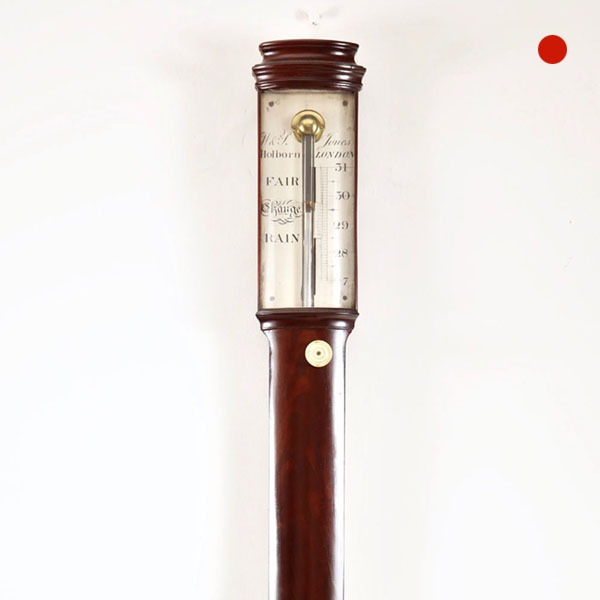
A fine 18th-Century George III mahogany bow-front stick barometer
The mahogany-veneered case has an austere form with only the moulded caddy top and the urn-shaped cistern cover to break its soberness. The silvered register plates are protected by a bowed glass, the recorder with vernier scale being operated by a knob below the register plate.
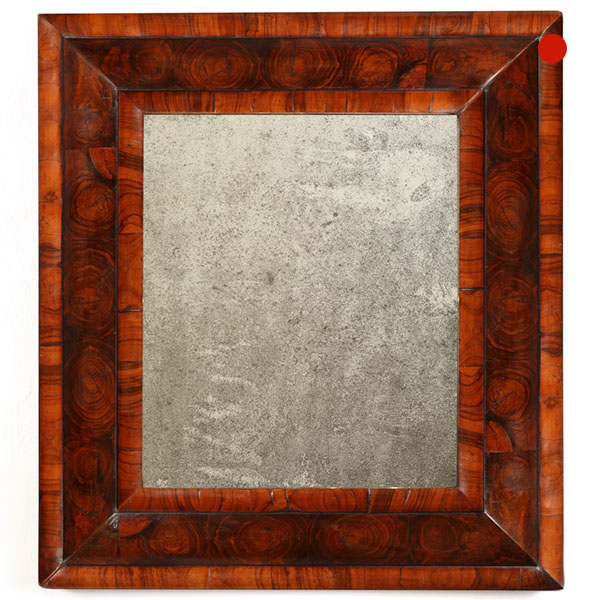
17th Century William and Mary Olive Oyster Cushion Mirror
17th Century William and Mary Olive Oyster Cushion Mirror Circa 1690 England SOLD Follow Us17th Century William and Mary Olive Oyster Cushion Mirror Further reading - Oystering or oyster veneer is a form of veneering, a type of parquetry....
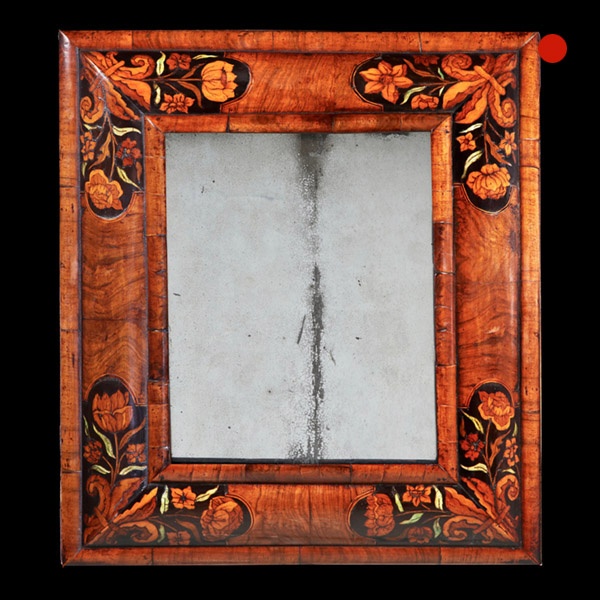
17th Century William and Mary Figured Walnut Marquetry Cushion Mirror
17th Century William and Mary Figured Walnut Marquetry Cushion Mirror SOLD Follow Us17th Century William and Mary Figured Walnut Marquetry Cushion Mirror From the restoration of the British Monarchy (1670-1685) we bring to you this charming...

A Rare And Unusual 19th-Century Carriage Clock Signed Devienne Lamy A St Quentin, Circa: 1860
A Rare And Unusual 19th-Century Carriage Clock Signed Devienne Lamy A St Quentin, circa 1860. The gorge case has bevelled glass panels on all sides.

A Unique And Fine Mid 19th-Century Travelling Clock By Celebrated Makers Arnold & Dent, London
Unique and Fine Mid 19th-Century Travelling Clock By Celebrated Makers Arnold & Dent, London. The time is indicated by a fine pair of blued-steel Breguet hands.

A fine burr walnut George I dressing mirror. Circa 1715-25 England.
A fine burr walnut George I dressing mirror Circa 1715-25 England. SoldFollow UsA fine burr walnut George I antique dressing mirror An extremely rare and fine George I burr walnut dressing mirror raised on ball and bracket feet. The drawer...

A fine 18th-Century George III mahogany bow-front stick barometer
The mahogany-veneered case has an austere form with only the moulded caddy top and the urn-shaped cistern cover to break its soberness. The silvered register plates are protected by a bowed glass, the recorder with vernier scale being operated by a knob below the register plate.

17th Century William and Mary Olive Oyster Cushion Mirror
17th Century William and Mary Olive Oyster Cushion Mirror Circa 1690 England SOLD Follow Us17th Century William and Mary Olive Oyster Cushion Mirror Further reading - Oystering or oyster veneer is a form of veneering, a type of parquetry....

17th Century William and Mary Figured Walnut Marquetry Cushion Mirror
17th Century William and Mary Figured Walnut Marquetry Cushion Mirror SOLD Follow Us17th Century William and Mary Figured Walnut Marquetry Cushion Mirror From the restoration of the British Monarchy (1670-1685) we bring to you this charming...
YOU MAY ALSO LIKE
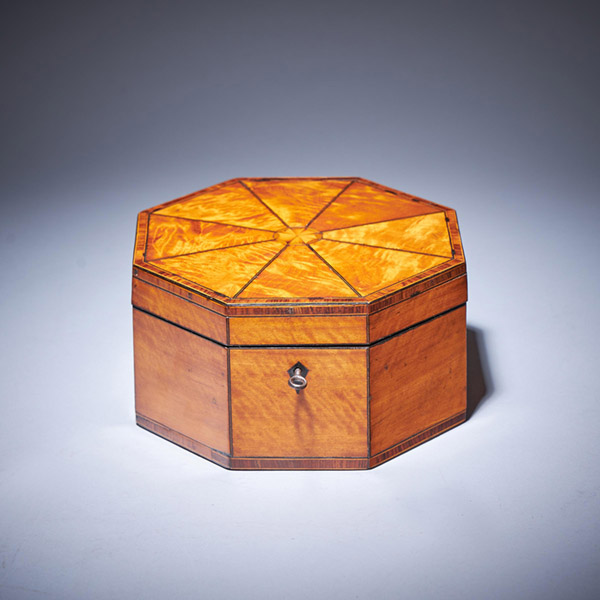
A Fine and Rare Late 18th Century George III Satinwood Octagonal Box, C.1790.
A Fine and Rare Late 18th Century George III Satinwood Octagonal Box, C.1790. £2,200[wpforms_selector form_id="11387" _builder_version="4.22.1" _module_preset="default" custom_margin="-30px||||false|false" hover_enabled="0"...
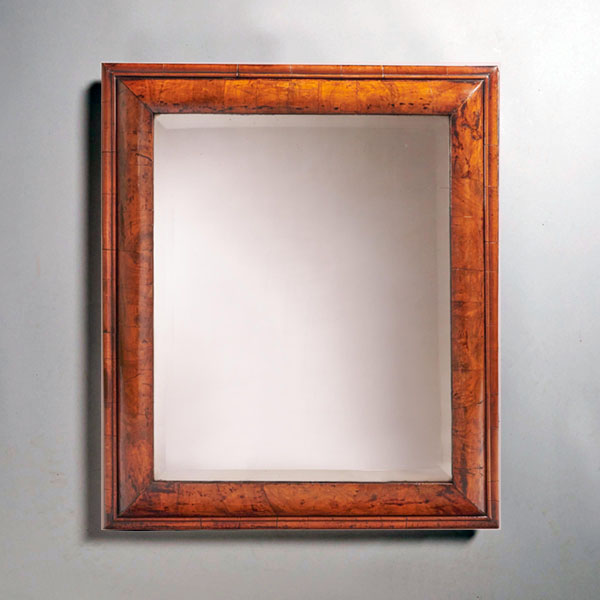
A Fine William and Mary 17th Century Figured Walnut Cushion Mirror C, 1690
A Fine William and Mary 17th Century Figured Walnut Cushion Mirror C, 1690 £6,500Follow UsA Fine William and Mary 17th Century Figured Walnut Cushion Mirror C, 1690 A large William and Mary 17th century figured walnut cushion mirror, circa...
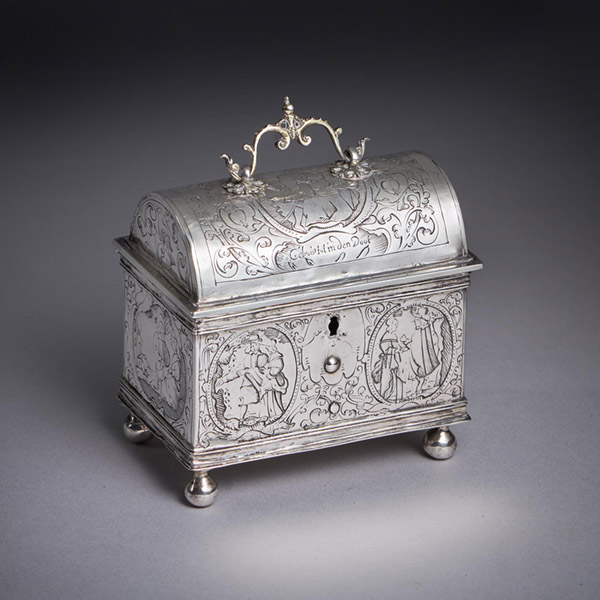
A museum-grade mid-17th century Dutch silver marriage casket or knottekistje, circa 1660
A museum-grade mid-17th century Dutch silver marriage casket or knottekistje, circa 1660 £9,500 [wpforms_selector form_id="11387" show_title="on" _builder_version="4.22.1" _module_preset="default" custom_margin="-30px||||false|false"...
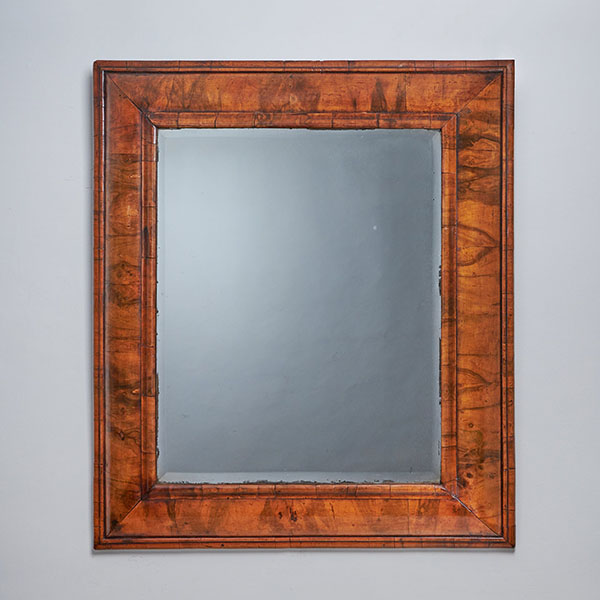
Large William and Mary 17th Century Figured Walnut Cushion Mirror c, 1690
Large William and Mary 17th Century Figured Walnut Cushion Mirror c, 1690 £7,495[wpforms_selector form_id="11387" show_title="on" _builder_version="4.22.1" _module_preset="default" custom_margin="-30px||||false|false" global_colors_info="{}"...
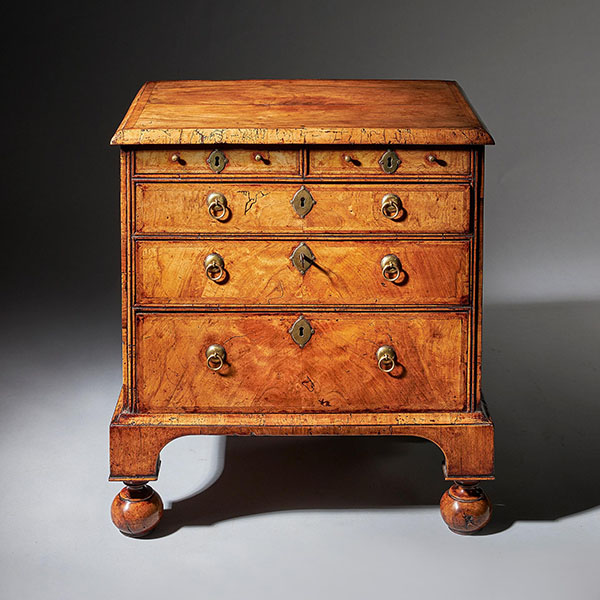
An extremely rare George I walnut chest of small proportions on ball and bracket
An extremely rare George I walnut chest of small proportions on ball and bracket £18,800[wpforms_selector form_id="11387" show_title="on" _builder_version="4.22.1" _module_preset="default" custom_margin="-30px||||false|false"...
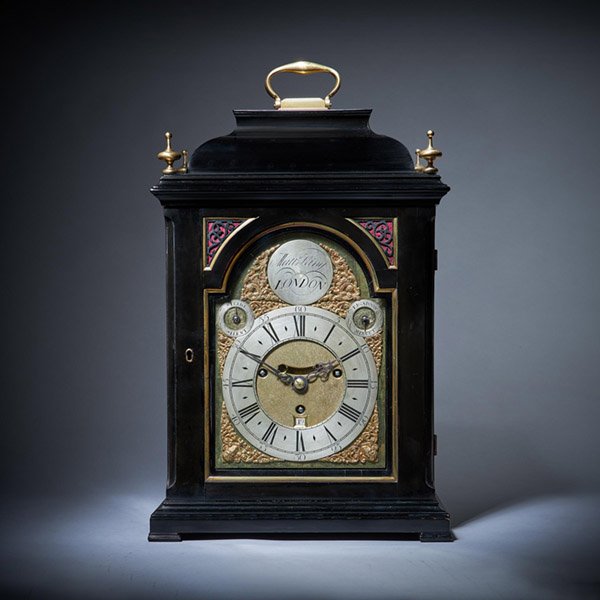
A Rare 18th Century George II Musical Table Clock by Matthew King, c. 1735.
A Rare 18th Century George II Musical Table Clock by Matthew King, c. 1735. £24,500[wpforms_selector form_id="11387" show_title="on" _builder_version="4.22.1" _module_preset="default" custom_margin="-30px||||false|false"...

A Fine and Rare Late 18th Century George III Satinwood Octagonal Box, C.1790.
A Fine and Rare Late 18th Century George III Satinwood Octagonal Box, C.1790. £2,200[wpforms_selector form_id="11387" _builder_version="4.22.1" _module_preset="default" custom_margin="-30px||||false|false" hover_enabled="0"...

A Fine William and Mary 17th Century Figured Walnut Cushion Mirror C, 1690
A Fine William and Mary 17th Century Figured Walnut Cushion Mirror C, 1690 £6,500Follow UsA Fine William and Mary 17th Century Figured Walnut Cushion Mirror C, 1690 A large William and Mary 17th century figured walnut cushion mirror, circa...

A museum-grade mid-17th century Dutch silver marriage casket or knottekistje, circa 1660
A museum-grade mid-17th century Dutch silver marriage casket or knottekistje, circa 1660 £9,500 [wpforms_selector form_id="11387" show_title="on" _builder_version="4.22.1" _module_preset="default" custom_margin="-30px||||false|false"...

Large William and Mary 17th Century Figured Walnut Cushion Mirror c, 1690
Large William and Mary 17th Century Figured Walnut Cushion Mirror c, 1690 £7,495[wpforms_selector form_id="11387" show_title="on" _builder_version="4.22.1" _module_preset="default" custom_margin="-30px||||false|false" global_colors_info="{}"...

An extremely rare George I walnut chest of small proportions on ball and bracket
An extremely rare George I walnut chest of small proportions on ball and bracket £18,800[wpforms_selector form_id="11387" show_title="on" _builder_version="4.22.1" _module_preset="default" custom_margin="-30px||||false|false"...

A Rare 18th Century George II Musical Table Clock by Matthew King, c. 1735.
A Rare 18th Century George II Musical Table Clock by Matthew King, c. 1735. £24,500[wpforms_selector form_id="11387" show_title="on" _builder_version="4.22.1" _module_preset="default" custom_margin="-30px||||false|false"...



